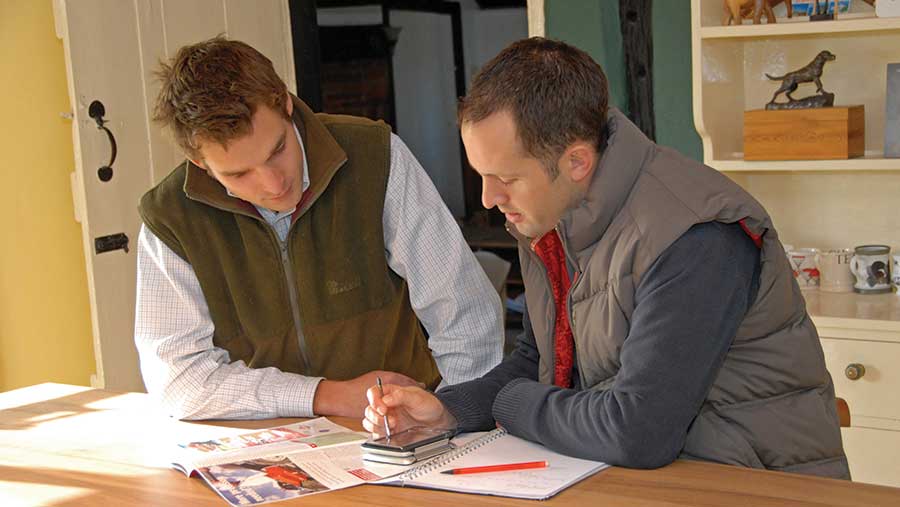Bringing in a new farm business partner: tax considerations
 © FLPA/imageBROK/REX Shutterstock
© FLPA/imageBROK/REX Shutterstock Bringing a new partner into an existing farm business partnership is a big decision. It should not be taken lightly and must be made for the right reasons. In the second part of Farmers Weekly’s series on partnership agreements, we look at the tax considerations.
he vast majority of farms operate as partnerships. These are flexible structures that allow you to add partners, potentially with no immediate tax charges for the existing or new members.
Reasons for choosing a partner could include rewarding children’s commitment to the farm or joining forces with other farmers to make a partnership more financially secure.
 Sarah Tucker is a private client tax specialist at Cambridge-based accountant PEM
Sarah Tucker is a private client tax specialist at Cambridge-based accountant PEMThe right time will be dictated by a number of factors including financial and family reasons such as recognising the contribution made by the next generation.
Each partner is treated as running their own sole trader business for income tax and capital gains tax purposes.
The founder partners will continue to pay their income tax and national insurance as before.
If the new partner was already registered for VAT, they may now need to deregister. There could be VAT implications if the new partner moves their existing business assets into the partnership.
See also: Legal considerations when bringing in a new farm business partner
The partnership’s annual profit or loss is allocated to each partner using a profit-sharing ratio.
Things to consider before introducing a new partner
- Are you ready to consider relinquishing any control over the business?
- Could you share some of the responsibilities with a new partner?
- Are they ready to take on those responsibilities?
- Are there enough profits to allow a sufficient standard of living for the new and old partners?
Consideration should be given to how profits are shared – should the new partner receive a fixed amount initially or a percentage share and should there be a return on any capital contributed?
Partnerships are very flexible; it will be down to each case to decide what is best for the members.
The timing of introducing a partner needs to be carefully considered for tax purposes. There can be opportunities and pitfalls.
Income tax
Special income tax rules apply to determine the “taxable income” in the first three years of becoming a partner. This can result in profits appearing to be taxed twice, although there are special rules to relieve this.
If losses are realised by a new partner in the first four years, these may generate a tax refund. It is important to discuss the tax implications on a case-by-case basis with your accountant to check how the timing of a new partner might affect the tax position of the individual and the business.
Income tax relief may be available for loan interest paid on borrowings used by a partner to invest in the partnership or for assets owned personally but used in the business.
The first part of this series features tax advice on forming a farming partnership as well as what legal issues need to be considered before setting up a partnership.
Capital gains tax (CGT)
There may not be any CGT implications for a new partner simply introducing cash or land into the business.
Things to do when a new partner joins
The new partner must:
- Notify HMRC of their new business by registering for self assessment. Complete form SA401 online and go to the “Partners” section.
- Pay their own tax and national insurance.
The partnership must:
- Include details of the new partner on its annual tax return.
- Inform HMRC of the new partner within 30 days of the admission if it is VAT registered. This will not change the partnership’s VAT registration number.
However, care is needed if they are deemed to purchase a share of the business assets held by the existing partners or if they give some of the assets they introduce to the other partners.
In tax terms, it may be deemed that a disposal has been made and this could give rise to a CGT liability. So, as with any transaction, check out the tax implications first.
Inheritance tax (IHT)
To achieve 100% IHT relief, the new partner could introduce assets held personally into his partnership capital account. Any IHT planning must be considered in the round and not just for assets in isolation.
Stamp duty land tax (SDLT)
There are special rules covering transfers of land between partners and partnerships that may create an SDLT liability if the new partner introduces land to the partnership.
However, it is possible in most cases to transfer land into family partnerships without such a cost.
The introduction of new partners – whether the next generation or-non family members – is a great time to review the partners’ goals.
It is also a good time to review the family constitution or succession plan and revise it. It is important to meet with your solicitor, accountant and land agent to plan for the introduction of a new partner to set up a plan that considers a wide range of implications.
